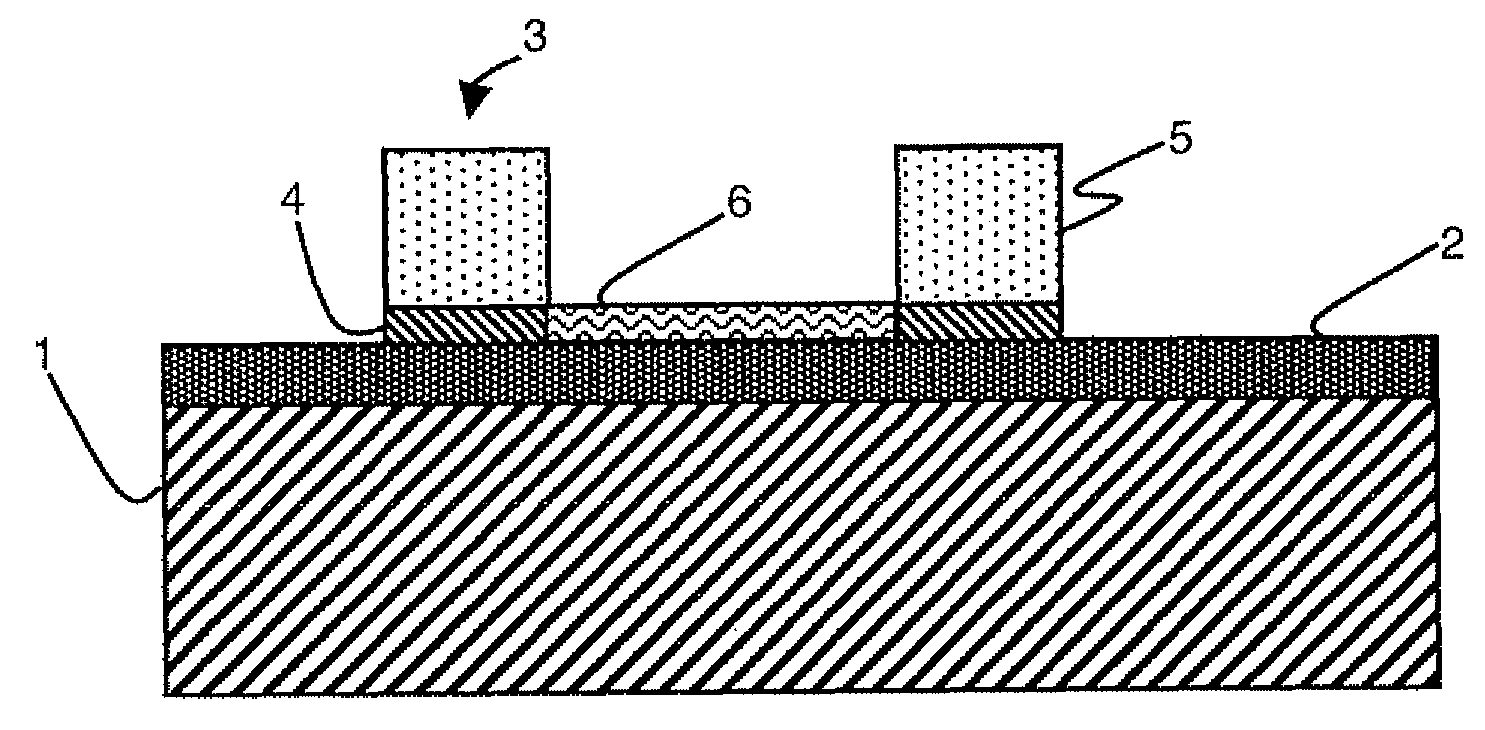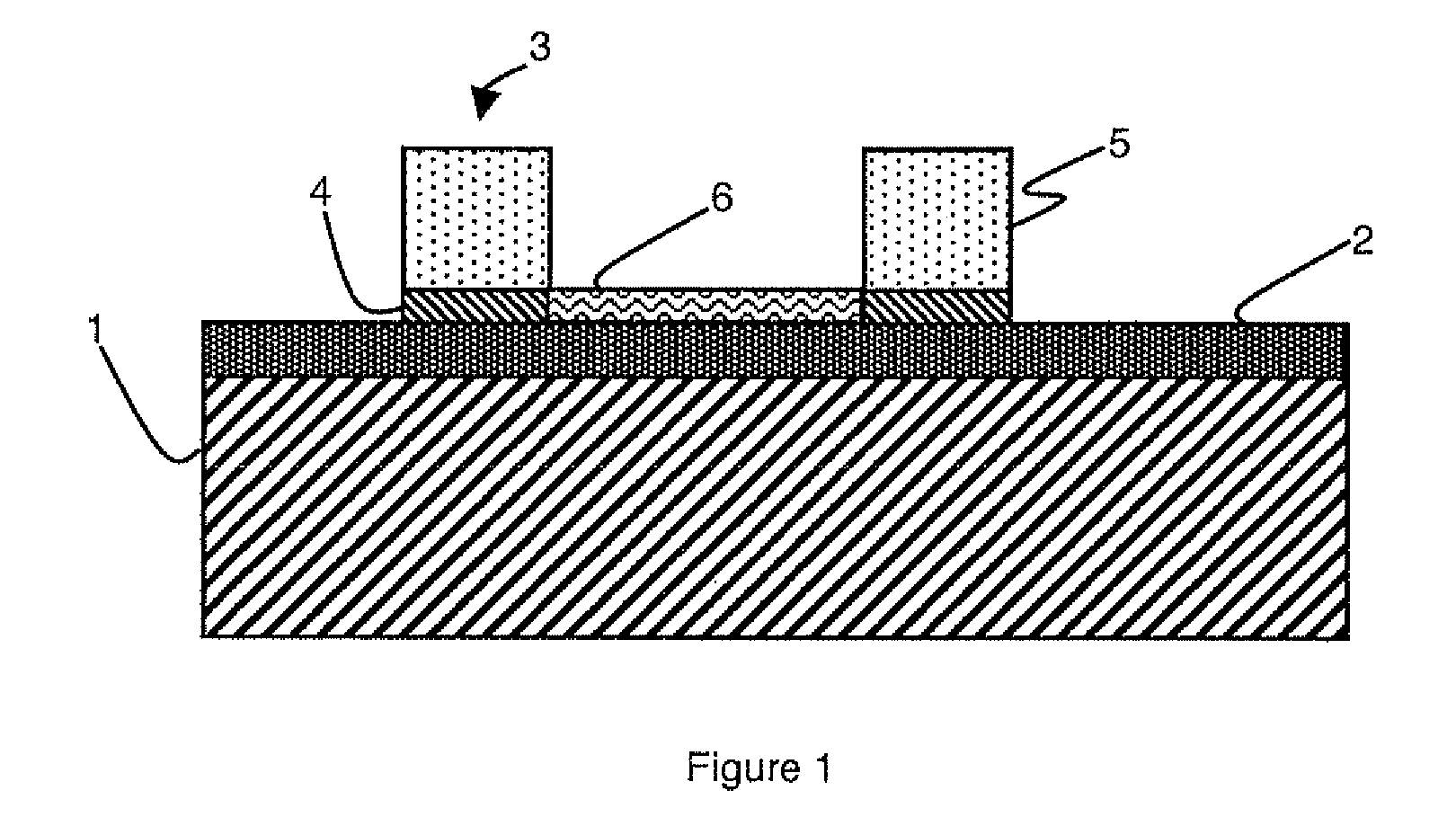Method of growing, on a dielectric material, nanowires made of semi-conductor materials connecting two electrodes
a technology of semi-conductor materials and nanowires, which is applied in the direction of nanotechnology, electrical equipment, and semiconductor devices, can solve the problems of large number of technological difficulties in the production of nanowires, inability to provide characteristics that match the requirements, and inability to achieve the quantum effects of field effect transistors no longer negligible, etc., and achieves limited heat budget and easy implementation.
- Summary
- Abstract
- Description
- Claims
- Application Information
AI Technical Summary
Benefits of technology
Problems solved by technology
Method used
Image
Examples
Embodiment Construction
[0012]As illustrated in FIG. 1, two electrodes 3 made from metallic material are formed on a layer of dielectric material 2 of a substrate 1. Perpendicularly to substrate 1, electrodes 3 present substantially parallel opposite lateral surfaces (vertical in FIG. 1) between which the nanowires have to be formed.
[0013]Layer of dielectric material 2 is for example chosen from silicon oxide-based materials, silicon nitride-based materials, HfO2-based materials and Al2O3-based materials. Substrate 1 is for example made from bulk silicon, but it can be made from glass or from any other material able to withstand the subsequent technological steps. If substrate 1 is made from dielectric material, layer 2 can be integrated in substrate 1. Substrate 1 can for example comprise transistors forming integrated circuits encapsulated in layer of dielectric material 2.
[0014]A layer of catalyst material 4, in contact with layer of dielectric material 2, is formed by a bottom layer of at least one of ...
PUM
| Property | Measurement | Unit |
|---|---|---|
| pressure | aaaaa | aaaaa |
| temperature | aaaaa | aaaaa |
| thickness | aaaaa | aaaaa |
Abstract
Description
Claims
Application Information
 Login to View More
Login to View More - R&D
- Intellectual Property
- Life Sciences
- Materials
- Tech Scout
- Unparalleled Data Quality
- Higher Quality Content
- 60% Fewer Hallucinations
Browse by: Latest US Patents, China's latest patents, Technical Efficacy Thesaurus, Application Domain, Technology Topic, Popular Technical Reports.
© 2025 PatSnap. All rights reserved.Legal|Privacy policy|Modern Slavery Act Transparency Statement|Sitemap|About US| Contact US: help@patsnap.com


